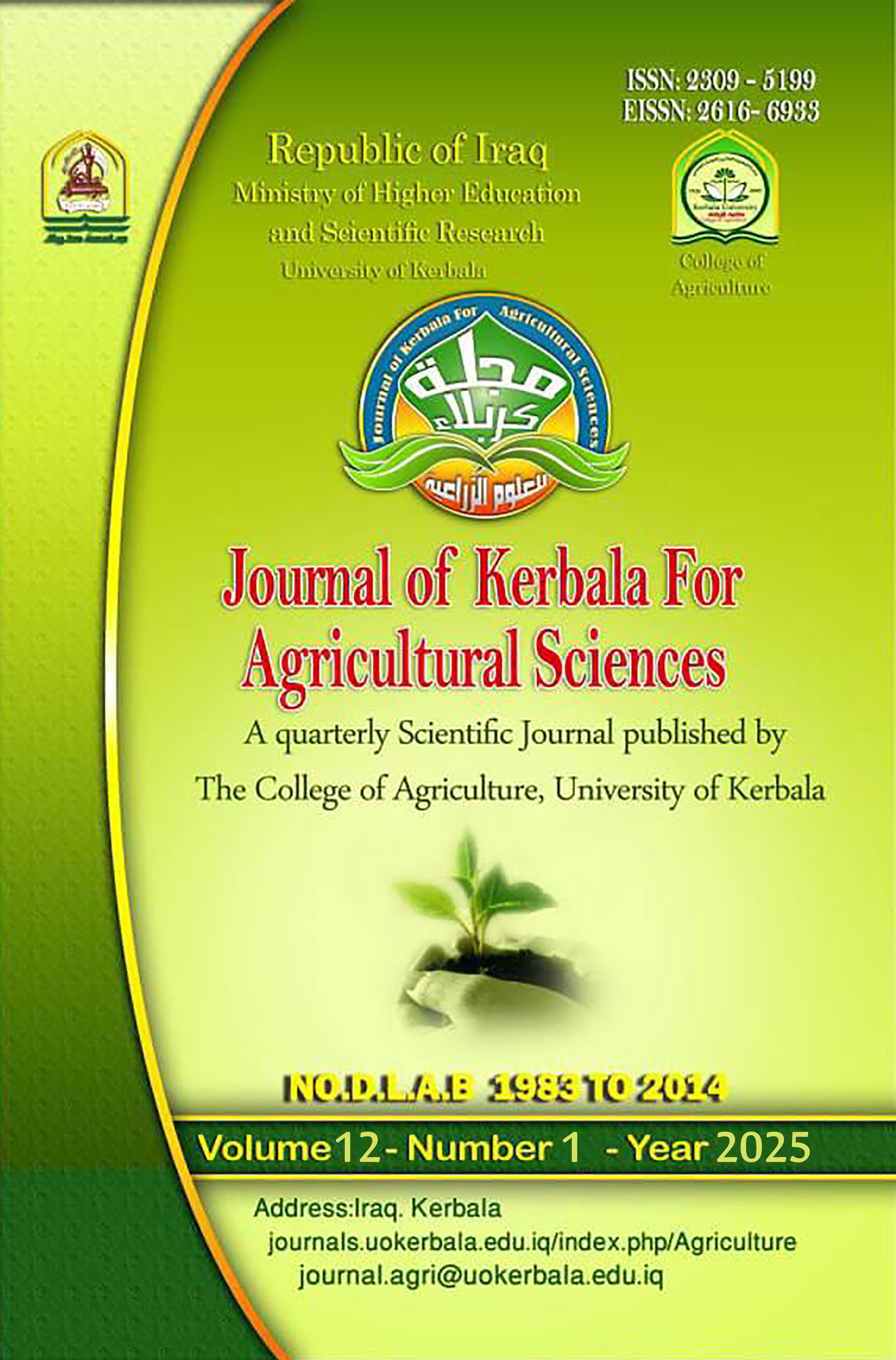Effects of Breed on hatchability and immune characteristics of indigenous chickens
DOI:
https://doi.org/10.59658/jkas.v12i1.3282Keywords:
Hatchability, Immunity, Traits, Iraqi local chicksAbstract
This study, was conducted at Hemn Private Hatchery in Erbil, Kurdistan Region, Iraq, examined 600 eggs (average weight 52.75±0.13 g) from 50-week-old indigenous chickens under sterile conditions. Findings revealed that Kurdish local chickens had a higher egg weight (55.60 g) compared to Iraqi black line (49.83 g). On the 18th day of incubation, average egg weights were 48.20 g for Kurdish chickens and 42.13 g for Iraqi black line, while by day 21, the weights dropped to 35.12 g and 31.93 g, respectively. Egg loss was 7.70% in Kurdish chickens and 7.40% in Iraqi black line. During the season, egg weight decreased by 17.90% in Kurdish chickens and 20.48% in improved chickens. Hatchability rates of total eggs were 67.27% for Kurdish chickens and 69.69% for Iraqi black line, while hatchability of fertile eggs was 75.05% and 76.71%, respectively. Embryo mortality was 33.33% in Iraqi black line and 30.40% in Kurdish breed. Additionally, Improved chickens showed greater resistance to Newcastle and Gumboro diseases than local Kurdish chickens.
Downloads
Published
How to Cite
Issue
Section
License
Copyright (c) 2025 Copyright (c) 2024 is the Author's article. Published by the Journal of Kerbala for Agricultural Sciences under a CC BY 4.0 license

This work is licensed under a Creative Commons Attribution 4.0 International License.
Licensing Terms
All articles are published under a Creative Commons License and will be directed to the Creative Commons Attribution 4.0 International License (CC BY 4.0) That permits use, distribution, and reproduction in any medium, provided the original work is properly cited. This license also allows the work to be used for commercial purposes.
Use by both non-commercial and commercial users
This content is licensed under a Creative Commons Attribution 4.0 International (CC BY 4.0) license, permitting use by both non-commercial and commercial users. Individual users may access, download, copy, display, and redistribute the articles to colleagues, as well as adapt, translate, and text- and data-mine the content, subject to the following conditions:
- The author's moral rights, including the right of attribution and the right to protect their work from derogatory treatment, are respected.
- Where content in the article is identified as belonging to a third party, users must ensure that any reuse complies with the copyright policies of the owner of that content.
- If the article content is reused for research or educational purposes, users should maintain a link to the appropriate bibliographic citation, including the DOI and a link to the published version on the journal's website.






